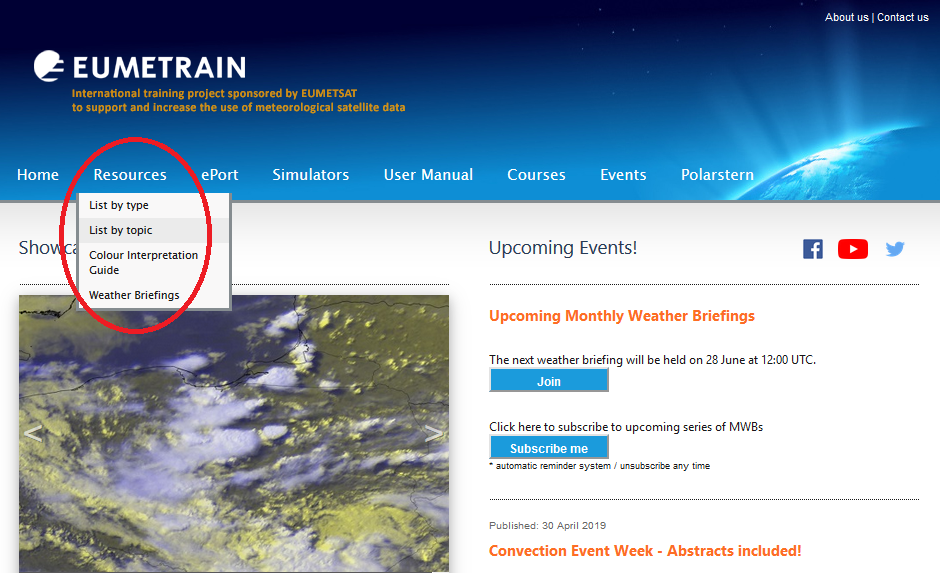Chapter I: Introduction
Introduction
The aim of this module is to guide the reader through the learning material provided by EUMeTrain on its webpage www.eumetrain.org.
Most of the material is dealing with a topic closely related to satellite meteorology. The intention of this module is to provide a red line through the vast amount of resources collected on this site by regrouping it into different topics. You can either follow the order proposed in this module to get a comprehensive overview on most of the topics treated in satellite meteorology or you can directly jump into a sub-chapter in order to complete or freshen up your knowledge.
The learning material comes in form of web-based modules or recorded presentations and are dedicated for self-study.
Figure 1: Main page of eumetrain.org showing the pull-down menu (red circle) of the training resources directory.
Formats
You will find various formats of learning material on the EUMeTrain web page:
Case Studies: These modules deal with exceptional weather situations in Europe. They give a detailed synoptic analysis and focus on the causes of the extreme weather events.
Training Modules: These modules treat a special topic in satellite meteorology and have more the character of a textbook. Short exercises at the end of each chapter complement the lessons.
Product Tutorials: These modules explain a satellite product (i.e. a product derived from satellite data). They show its physical background and ways how to use the product in daily practice.
Webcasts: These are recorded online presentations, many of them stem from courses and other training activities. Presentations were recoded together with the presentation slides.
Event Weeks: Here you will find the webcasts grouped by topics treated during so-called event weeks. Event weeks consist of several online presentations (web casts).
Conceptual Models: These modules refer to the chapters of the "Manual of Synoptic Satellite Meteorology".
Notice: The resources are ordered according to their date of appearance, i.e. the newest on top and the older below. If the same topic has been treated twice or more in the course of the years, the same rule applies.
